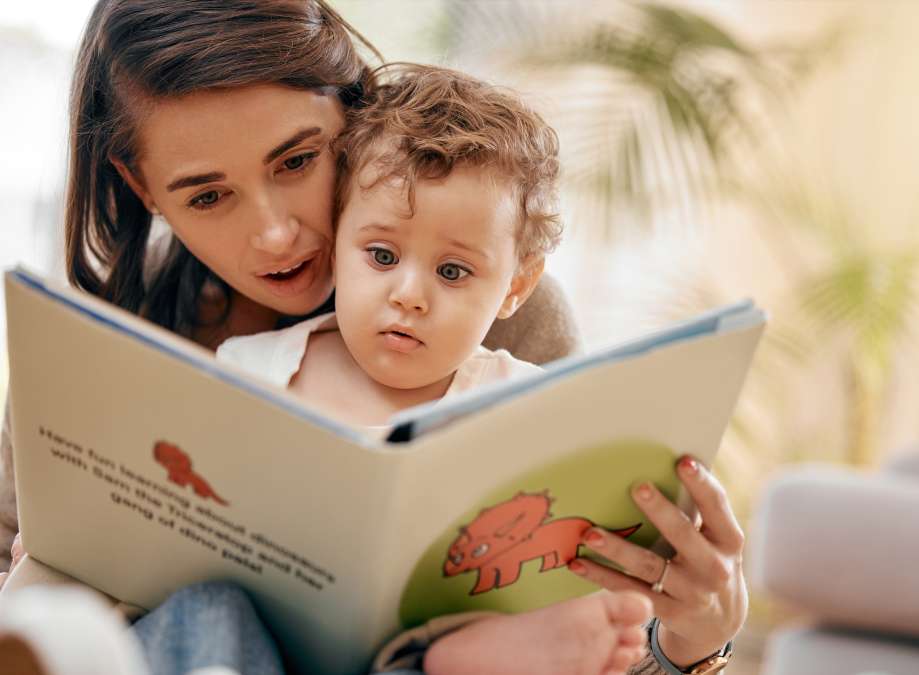Picture books have long been cherished as delightful companions in a child’s early years. Beyond their colourful pages and captivating stories, these books significantly shape a child’s emotional landscape. This article looks into the influence of picture books on a child’s emotional development. It also explores the power of storytelling, empathy cultivation, and the lasting impact on emotional intelligence.
Picture books have long been a cherished staple of childhood, capturing the imagination of young readers with colourful illustrations and captivating stories. Beyond their entertainment value, these books greatly influence a child’s emotional development. The pages of a picture book serve as a gateway to a world of emotions, building empathy, understanding, and self-awareness in young readers. Picture books, whether depicting tales of kindness or self-discovery, play a significant role in shaping a child’s emotional landscape. They nurture a child’s capacity for empathy with the world around them.
1. The Power of Storytelling in Picture Books
a. Imagination and Creativity
Picture books ignite a child’s imagination, allowing them to explore worlds beyond their own. The vivid illustrations and compelling narratives stimulate creativity, building a love for storytelling that becomes a foundation for emotional expression and understanding.
b. Language Development

The rich language used in picture books enhances a child’s vocabulary and language skills. Exposure to diverse words and expressions helps in articulating emotions. This linguistic development lays the foundation for effective emotional communication, enabling children to express their feelings more precisely.
2. Cultivating Empathy Through Characters
a. Identifiable Characters
Picture books often feature relatable characters facing various emotions and challenges. Children identify with these characters, forming a connection that helps them understand different emotional experiences. This identification builds empathy as children learn to recognize and resonate with the feelings of others.
b. Diversity in Perspectives

Diverse characters and narratives expose children to various emotions experienced by individuals from multiple backgrounds. This diversity in perspectives broadens a child’s understanding of emotions, encouraging them to empathize with the feelings of characters who may differ from themselves.
3. Emotional Intelligence Development
a. Recognizing Emotions
Picture books serve as a tool for teaching children to recognize and name emotions. By exploring characters expressing joy, sadness, fear, and anger, children develop the ability to identify these emotions in themselves and others. This foundational skill is crucial for emotional intelligence.
b. Understanding Cause and Effect

Through the cause-and-effect relationships portrayed in picture books, children grasp the consequences of emotions and actions. Understanding that certain actions lead to specific emotional outcomes cultivates emotional intelligence. It also helps children navigate their own emotions and understand the impact of their behaviour on others.
4. Addressing Complex Emotions
a. Dealing with Fear and Anxiety
Picture books often address complex emotions like fear and anxiety through storytelling. Characters overcoming their fears or facing challenging situations provide a safe space for children to explore and understand their anxieties, promoting emotional resilience.
b. Coping with Loss and Sadness

Books that tackle themes of loss and sadness assist children in understanding these challenging emotions. By witnessing characters navigate grief or sadness, children gain insights into coping mechanisms and learn that these emotions are a natural part of the human experience.
5. Fostering Emotional Expression
a. Artistic Representation
The illustrations in picture books serve as a visual representation of emotions. Observing how artists convey feelings through colors, facial expressions, and body language helps children learn alternative forms of expression. Simultaneously, this promotes both artistic and emotional development in them.
b. Encouraging Verbal Expression

Engaging in discussions about the emotions depicted in picture books encourages children to verbalize their thoughts and feelings. This verbal expression enhances language skills and provides an avenue for children to articulate and share their emotional experiences.
The influence of picture books on a child’s emotional development is proof of literature’s significant impact on young hearts and minds. Picture books are invaluable tools in nurturing well-rounded individuals, from sparking imagination and cultivating empathy to building emotional intelligence and addressing complex emotions. Including diverse and emotionally resonant stories into a child’s literary journey is essential. Caregivers can actively contribute to developing emotional understanding and foster a lifelong love for storytelling through this approach.
